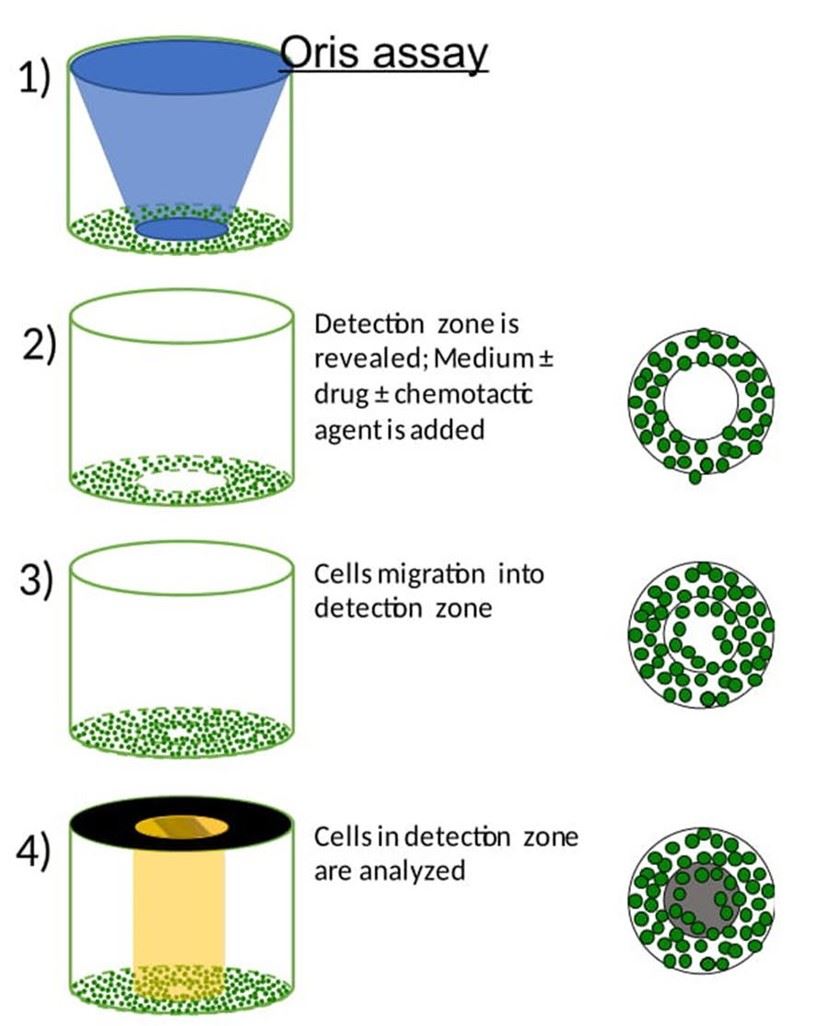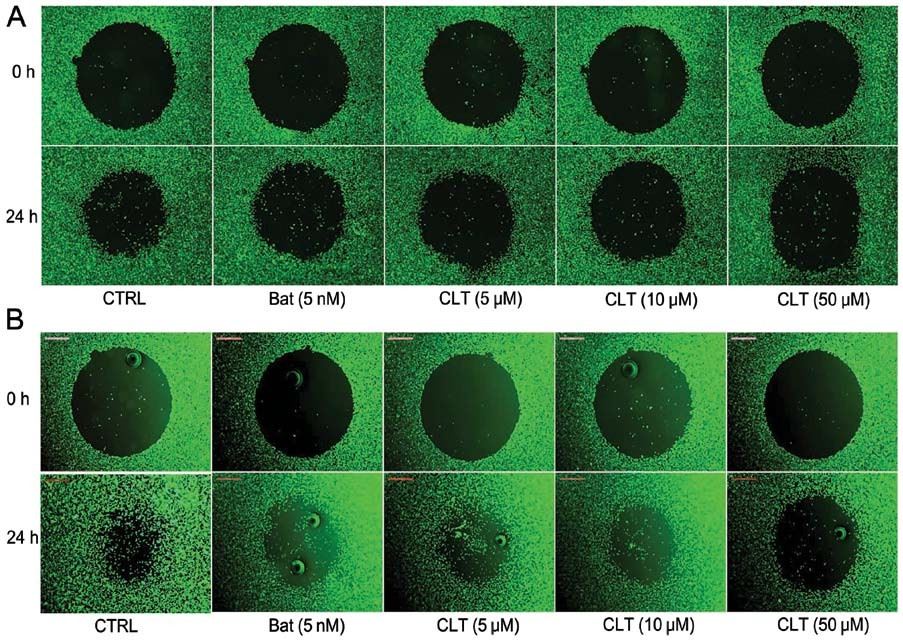The Oris Cell Migration Assay is easy to use and provides highly reproducible results. By simply adding cells to the detection zone and allowing them to migrate into the cell-free zone, researchers can measure and analyze cell migration in a variety of cell types and experimental conditions.
With the Oris Cell Migration Assay, researchers can investigate important cellular processes such as wound healing, metastasis, and immune cell migration. This assay is ideal for studying the effects of various factors on cell migration, including drugs, growth factors, and genetic modifications.
 Figure 1. Illustration of the Oris migration assay, which was used to assess cell migration.[1]
Figure 1. Illustration of the Oris migration assay, which was used to assess cell migration.[1]
Creative Bioarray is committed to providing researchers with high-quality tools for their cell-based experiments. Our Oris Cell Migration Assay is a state-of-the-art solution for studying cell migration in a controlled and reproducible manner.
Study Examples:
 Figure 2. Effects of CLT on migration of breast cancer cells. (A) CLT inhibited the migration of MDA-MB‑231 cells in Oris cell migration system. (B) Effects of CLT on in vitro migration of MDA-MB‑157 cells. In vitro migration assay was carried out as described in Materials and methods. Vehicle (DMSO) was used as a CTRL and Bat served as the positive CTRL. Each assay was performed in triplicate. CLT, Codonolactone; Bat, Batimastat; CTRL, control.[2]
Figure 2. Effects of CLT on migration of breast cancer cells. (A) CLT inhibited the migration of MDA-MB‑231 cells in Oris cell migration system. (B) Effects of CLT on in vitro migration of MDA-MB‑157 cells. In vitro migration assay was carried out as described in Materials and methods. Vehicle (DMSO) was used as a CTRL and Bat served as the positive CTRL. Each assay was performed in triplicate. CLT, Codonolactone; Bat, Batimastat; CTRL, control.[2]
References:
1. Kappes L, Amer RL, Sommerlatte S, et al. Ambrisentan, an endothelin receptor type A-selective antagonist, inhibits cancer cell migration, invasion, and metastasis. Sci Rep. 2020;10(1):15931. Published 2020 Sep 28. doi:10.1038/s41598-020-72960-1
2. Wang W, Chen B, Zou R, et al. Codonolactone, a sesquiterpene lactone isolated from Chloranthus henryi Hemsl, inhibits breast cancer cell invasion, migration and metastasis by downregulating the transcriptional activity of Runx2. Int J Oncol. 2014;45(5):1891-1900. doi:10.3892/ijo.2014.2643
Online Inquiry